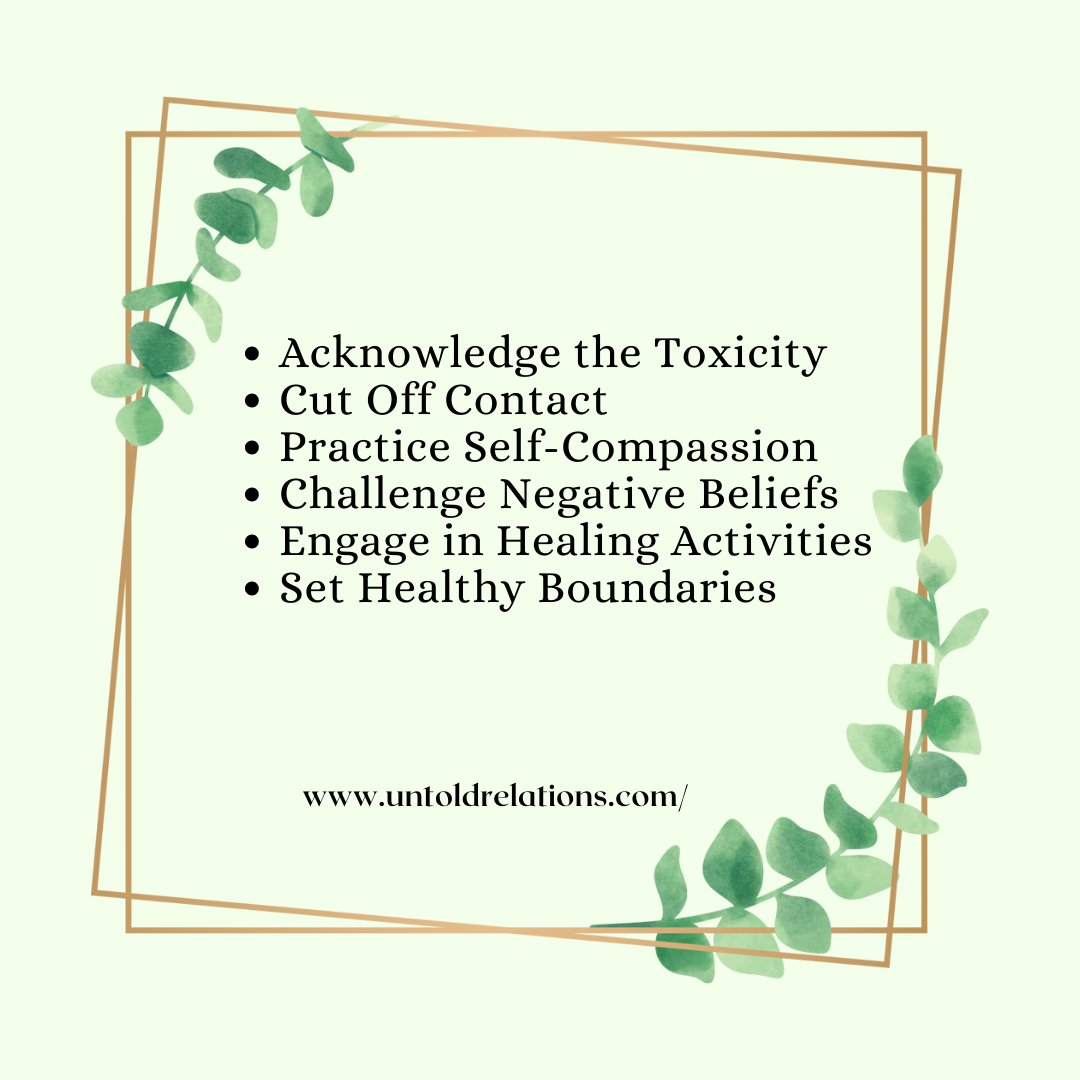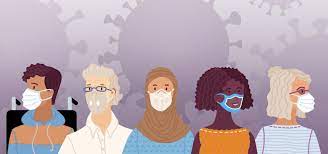Being in a toxic relationship can have a major impact on mental and emotional well-being. Toxic relationships can leave us feeling drained, hurt, and even traumatized. But, the good news is that with time, effort, and support, it is possible to heal and move on from a toxic relationship. It will be good to know about the effective ways to heal from a toxic relationship. Here are a few steps that one can use to begin to heal and move forward, building a happier and healthier future for yourself.

Steps to Heal and Move On After a Toxic Relationship
Healing from a toxic relationship is possible. Follow these essential steps to move on, rebuild, and create a happier and healthier future for yourself.
Acknowledge the Toxicity
Acknowledging the toxicity of a relationship is often the first and most crucial step in healing from it. Acknowledging the toxicity means accepting that the other person’s behavior was not okay and that it hurt you. It means recognizing that you deserve to be treated with respect, kindness, and love. This can be difficult, especially if you have been in the relationship for a long time or if you have feelings of attachment or love for the other person. However, it is important to understand that acknowledging the toxicity does not mean blaming yourself or feeling guilty for what happened.
By acknowledging the toxicity, you can begin to take control of your own healing process. You can start to let go of the blame and shame that you may be carrying and focus on taking care of yourself. You can also begin to identify the patterns of toxic behavior that were present in the relationship, which can help you avoid similar situations in the future.
Cut Off Contact
Cutting off contact with a toxic person is often necessary for your own well-being and healing. This includes blocking their phone number, unfollowing them on social media, and avoiding places where you might run into them. It also means not responding to their attempts to contact you, whether that be through phone calls, emails, or social media messages. Cutting off contact may be a difficult process, but it can also be empowering. It allows you to take control of the situation and protect yourself from further harm. It also creates space for you to focus on your own healing and growth.
Cutting off contact does not necessarily mean that you hate the other person or that you want to hurt them. It simply means that you are prioritizing your own well-being and taking steps to create a healthier environment for yourself. If you are struggling with cutting off contact, then look for support from a therapist or support group. They can help you navigate the process and provide you with the tools and resources you need to move forward.
Practice Self-Compassion
Practicing self-compassion is an important part of healing from a toxic relationship. Practicing self-compassion can be difficult, especially if you’ve been in a toxic relationship where you may have been made to feel unworthy or inadequate. It means treating yourself with kindness, understanding, and empathy, just as you would treat a close friend who is going through a difficult time. Self-compassion involves being patient and forgiving with yourself, accepting your flaws and mistakes, and understanding that you are human and deserving of love and care.
To practice, self-compassion, start by noticing your self-talk and the way you treat yourself. Are you harsh or critical? Do you put yourself down or blame yourself for what happened? If so, try to reframe those thoughts with kinder, more compassionate ones. You can also try journaling or meditation to help you cultivate a sense of self-compassion and self-care.
Challenge Negative Beliefs
Challenging negative beliefs is an important step in healing from a toxic relationship. To challenge negative beliefs, start by identifying the negative thoughts or beliefs you have about yourself. For example, you may think “I’m not worthy of love” or “I’m responsible for what happened in the relationship.” Once you’ve identified these thoughts, try to challenge them with evidence that contradicts them. For example, if you think “I’m not worthy of love,” you can remind yourself of times when you felt loved and valued by others, or think of positive qualities and accomplishments that make you feel proud and deserving of love.
This can help you see the situation in a more balanced and realistic light, and reduce feelings of guilt or shame.
Engage in Healing Activities
Engaging in healing activities is an important part of the process of healing from a toxic relationship. When we experience a toxic relationship, we often experience a range of negative emotions, such as anxiety, fear, anger, and sadness. Engaging in healing activities can help us release these emotions, reduce stress, and improve our overall well-being.
There are many different types of healing activities, including physical exercise, creative expression, mindfulness meditation, self-care, and social support. By engaging in these activities, we can take steps to improve our mental and physical health, build resilience, and move forward on our healing journey. Remember that everyone’s healing journey is different, and it’s important to find activities that work for you.
Set Healthy Boundaries
Setting healthy boundaries is an important aspect of healing from a toxic relationship. In a toxic relationship, the boundaries are often disregarded, and we may feel powerless or unable to enforce them. Setting healthy boundaries can help us build self-respect, increase our self-esteem, and foster healthy relationships with others. Healthy boundaries are a way to express our needs and preferences while being assertive and respectful of others.
Setting healthy boundaries is not selfish or unreasonable. It is an essential step in protecting your well-being, and it can help you build healthy relationships with others. By setting healthy boundaries, you are taking control of your life and your relationships, and you are creating a better future for yourself.
Tips for Healing and Moving On After a Toxic Relationship
Take control of your healing journey with these essential tips for moving on and building a happier, healthier future after a toxic relationship
- Focus on self-care and engage in activities that make you happy
- Allow yourself time to heal and don’t rush the process
- Stay committed to your healing journey, even when it’s challenging
- Surround yourself with positive and supportive people
- Practice mindfulness and focus on the present moment
- Celebrate your successes, no matter how small they may seem
- Forgive yourself and your ex-partner, but don’t forget the lessons learned
- Remember that healing is a personal journey and can take time
- Avoid any contact with your ex-partner, including social media
- Learn from your past relationship and identify any red flags or warning signs for future relationships
- Consider seeking legal help if necessary, such as a restraining order or legal action for abuse
- Practice gratitude and focus on the positive aspects of your life, no matter how small they may seem
- Be patient and kind to yourself, and remember that healing is a process that takes time and effort
Final Thought
Healing after a toxic relationship can be a challenging and complex process, but it is essential for your emotional, mental, and physical wellbeing. Remember to be patient and kind to yourself, and look for support from loved ones or a mental health professional, if necessary. With time, effort, and self-care, you can reclaim your life and move on from the effects of a toxic relationship.



0 Comments